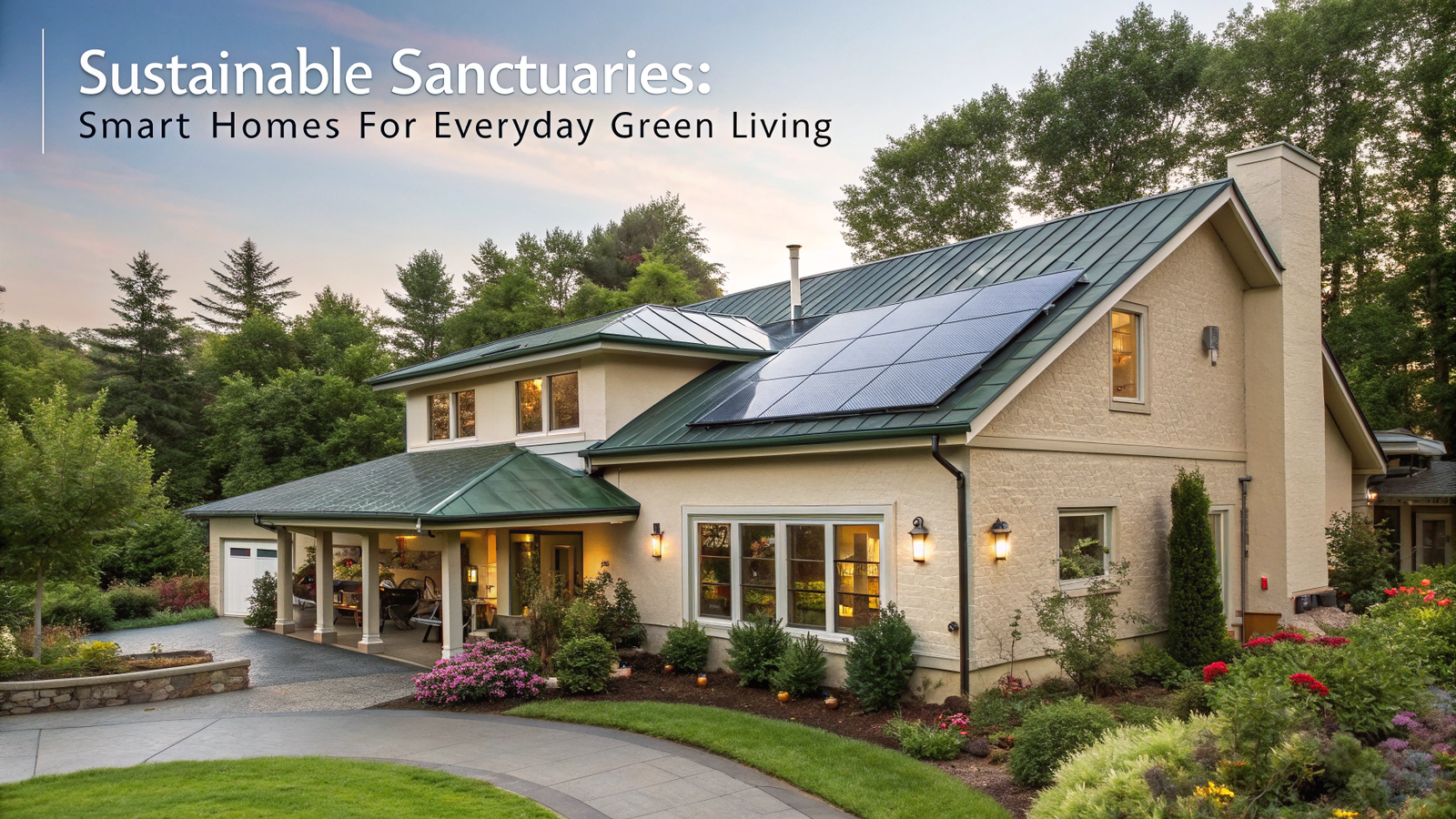
Sustainable Sanctuaries: Smart Homes for Everyday Green Living
In recent years, the concept of the “smart home” has transformed from a futuristic novelty to an accessible reality. With intelligent devices capable of automating tasks, monitoring energy use, and enhancing comfort, smart homes have become central to modern living. Yet, beyond convenience and luxury, smart homes hold tremendous potential as sustainable sanctuaries—spaces that harmonize technology and eco-consciousness to promote everyday green living.
As the world grapples with climate change, resource depletion, and environmental degradation, sustainable living is no longer optional; it is imperative. Integrating sustainability into our homes—the very spaces where we spend much of our time—offers a powerful way to reduce our carbon footprint, conserve resources, and foster a deeper connection with the natural environment.
This article explores how smart home technologies can enable sustainable habits and transform houses into sustainable sanctuaries, helping individuals and families embrace greener living effortlessly every day.
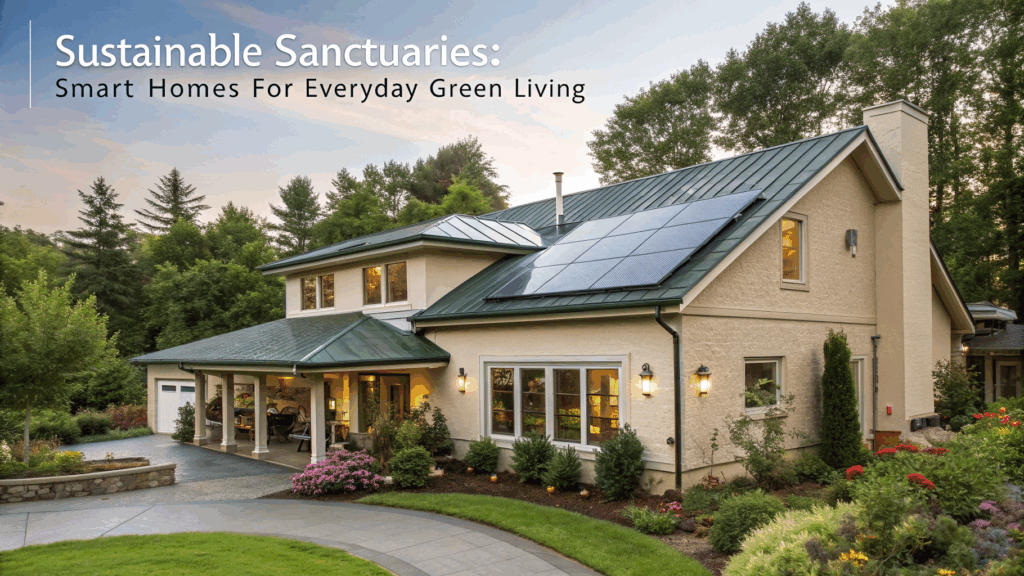
1. The Intersection of Smart Technology and Sustainability
Smart home technology primarily focuses on automation, connectivity, and efficiency. Sensors, smart thermostats, lighting controls, energy monitors, and voice assistants collaborate to optimize home systems. When designed and used with environmental stewardship in mind, these technologies become tools for sustainability.
Key benefits of integrating sustainability into smart homes include:
- Energy savings: Automation and real-time data help reduce wasted electricity and heat.
- Water conservation: Smart irrigation and leak detection curb water waste.
- Waste reduction: Intelligent waste management and recycling reminders support eco-friendly habits.
- Improved indoor environment: Air quality sensors ensure healthier living spaces, reducing reliance on harmful chemicals.
- Behavioral change: Feedback systems encourage conscious consumption through data visualization and alerts.
Smart homes enable residents to not only consume less but also consume smarter.
2. Energy Efficiency: The Heart of Sustainable Smart Homes
Energy consumption is the largest component of household environmental impact. Smart homes target this through several key technologies:
a. Smart Thermostats
Devices like Nest, Ecobee, and Honeywell learn your routines and adjust heating and cooling accordingly. By only running HVAC systems when needed, they reduce energy waste and lower utility bills.
- Geofencing: Automatically lowers energy use when the house is empty.
- Adaptive Scheduling: Learns your habits to optimize comfort and efficiency.
- Energy Usage Reports: Offers insights and tips for further savings.
In sustainable sanctuaries, heating and cooling become responsive, not reactive.
b. Intelligent Lighting
LED bulbs controlled via apps or voice assistants are vastly more efficient than incandescent bulbs. Smart lighting can:
- Adjust brightness based on natural light availability.
- Turn off automatically when rooms are empty.
- Change color temperature to support circadian rhythms, improving wellbeing without wasting energy.
Smart lighting helps residents illuminate only when and where necessary, minimizing unnecessary power draw.
c. Home Energy Monitors
Systems like Sense or Emporia provide real-time feedback on energy consumption by appliance or circuit. This data empowers residents to identify energy hogs and modify habits.
Visualizing energy use turns sustainability from abstract ideals into concrete, actionable steps—a powerful motivator for behavioral change.
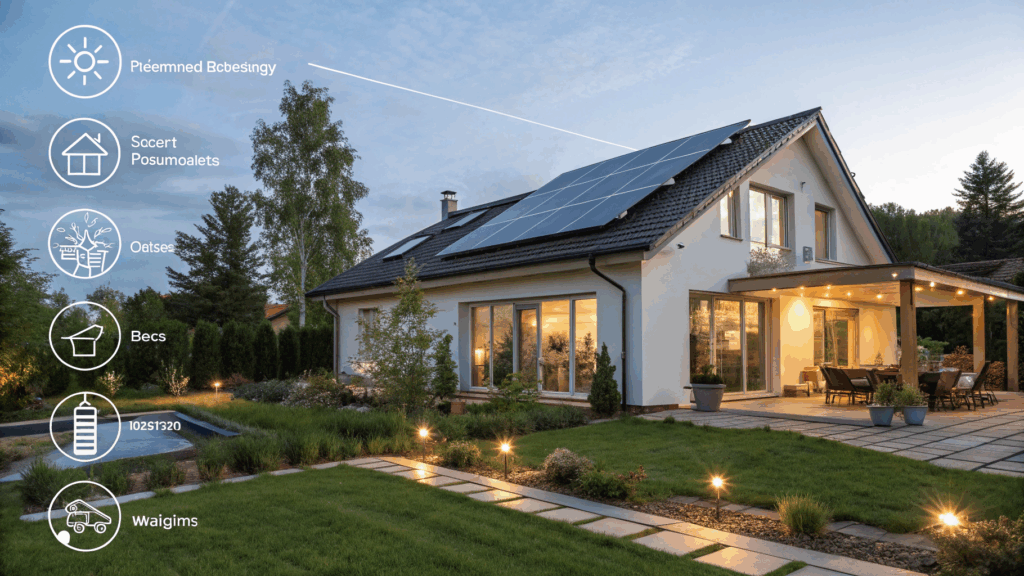
3. Water Conservation: Smarter Use, Less Waste
Water is an increasingly precious resource worldwide, and smart home tech offers elegant solutions:
a. Smart Irrigation Systems
Devices like Rachio or RainMachine adjust watering schedules based on weather forecasts, soil moisture, and plant type. This prevents overwatering, conserves water, and promotes healthier landscaping.
b. Leak Detection Sensors
Sensors placed near pipes, water heaters, or appliances alert homeowners to leaks early, preventing waste and costly damage. Some systems even shut off water automatically when a leak is detected.
c. Smart Faucets and Showerheads
Flow-restricting smart faucets or app-controlled showers encourage water-efficient habits. Some devices provide live feedback on water usage, fostering mindfulness during daily routines.
4. Waste Management and Recycling: Toward a Circular Home
Smart technology can aid in reducing, sorting, and properly disposing of waste:
a. Intelligent Waste Bins
Emerging smart bins can identify recyclable materials, compact waste, and send reminders for trash day. While still evolving, these systems offer exciting potential for streamlining waste management.
b. Digital Reminders and Educational Apps
Apps that remind users about recycling schedules, hazardous waste disposal, or composting practices make it easier to maintain eco-friendly habits.
By simplifying sustainable waste management, smart homes encourage consistent, effective action.
5. Enhancing Indoor Environmental Quality
Sustainable sanctuaries focus not only on external impact but also on internal health:
a. Air Quality Sensors and Purifiers
Smart devices like Awair or Airthings monitor VOCs, particulate matter, humidity, and CO₂ levels. Based on data, air purifiers or ventilation systems adjust automatically to maintain healthy indoor environments.
Good air quality supports occupant health while reducing the need for chemical air fresheners or energy-intensive air conditioning.
b. Natural Lighting and Window Automation
Smart window blinds can adjust throughout the day to maximize natural light and heat from the sun in winter, while minimizing overheating in summer, reducing the need for artificial lighting and HVAC load.
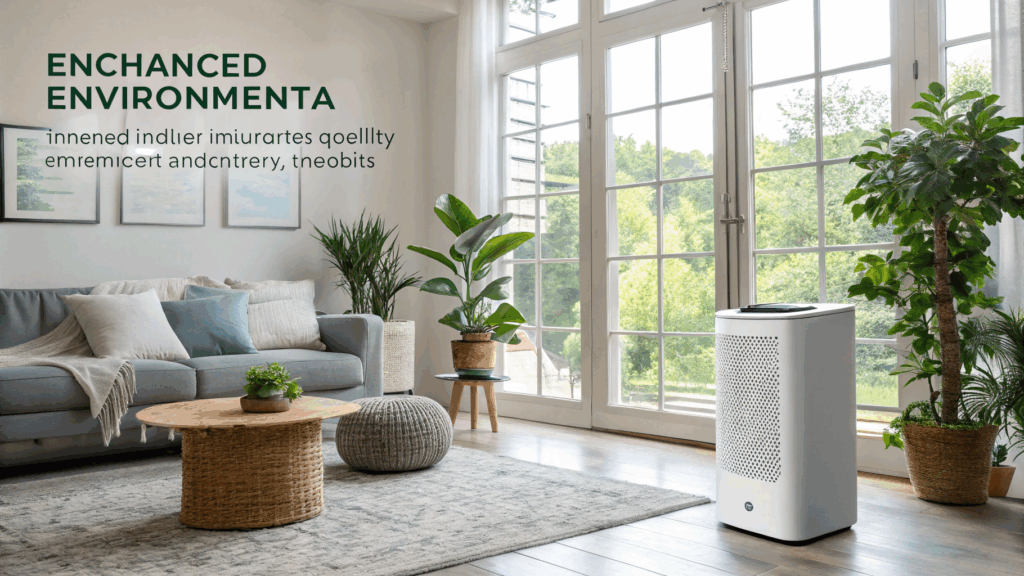
6. Renewable Energy Integration: Powering Sustainable Sanctuaries
Many smart homes pair with renewable energy sources:
a. Solar Panels and Battery Storage
Smart home systems integrate solar generation with home energy management to optimize self-consumption, minimize grid reliance, and maximize savings.
Battery storage solutions like Tesla Powerwall store excess solar energy for nighttime use, increasing resilience and sustainability.
b. Smart Charging for Electric Vehicles (EVs)
Smart EV chargers schedule charging during off-peak hours or when solar production is high, reducing carbon footprint and electricity costs.
7. Smart Kitchens for Sustainable Cooking and Food Management
Kitchens are hubs of resource use and waste generation. Smart technology helps minimize impact:
a. Energy-Efficient Appliances
Smart refrigerators, ovens, and dishwashers optimize cycles and energy use. For example, refrigerators can adjust cooling based on door openings or interior load.
b. Food Waste Reduction
Smart fridges with inventory tracking and expiration notifications help prevent spoilage. Apps like Too Good To Go or Olio assist in redistributing surplus food.
8. Behavioral Change: The Psychological Power of Smart Homes
Perhaps the most profound contribution of smart homes to sustainability is the feedback loop they create. When people see real-time data on energy, water, or waste, they are motivated to change behaviors.
Daily rituals can emerge around checking energy dashboards, adjusting settings, or setting goals with family members. This ongoing engagement deepens the sense of responsibility and satisfaction.
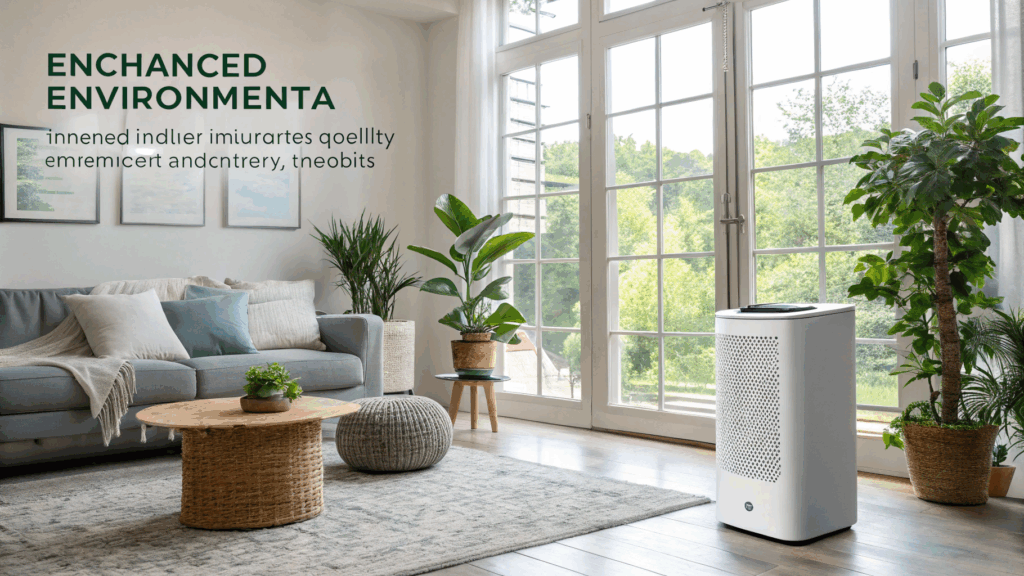
9. Designing for Accessibility and Inclusivity
Sustainable sanctuaries should be inclusive, ensuring eco-friendly living is accessible to diverse populations.
- Voice controls and simple interfaces make smart tech usable for all ages and abilities.
- Energy savings translate into cost savings, benefiting low-income households.
- Community-scale smart home programs can democratize access.
10. Challenges and Considerations
While promising, smart sustainable homes face challenges:
- Upfront costs: Smart devices and solar systems require investment.
- Data privacy: Increased connectivity raises security concerns.
- Interoperability: Devices from different brands may not always integrate seamlessly.
- E-waste: Technology turnover must be managed responsibly.
Smart sustainable living demands careful design, ongoing education, and systemic support.
11. Case Studies: Real-World Sustainable Sanctuaries
a. The Smart Net-Zero Home
In California, some homes combine solar panels, battery storage, smart HVAC, and energy monitoring to achieve net-zero energy use. Residents report monthly bills near zero and a sense of empowerment through control over their footprint.
b. Urban Apartment Smart Retrofit
In New York City, retrofit projects install smart thermostats, LED lighting, and water-saving devices in rental apartments. These improve comfort and lower costs for tenants while reducing building-wide environmental impact.
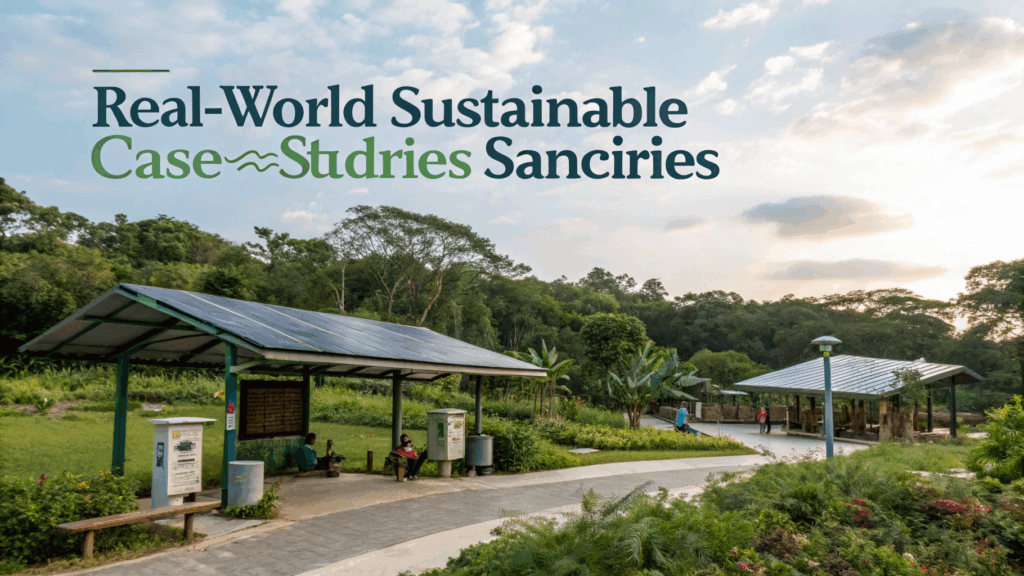
12. Future Directions: Toward Holistic Sustainable Living
As AI advances, smart homes will become even more predictive and personalized. Integration with local grids will allow homes to participate in demand response programs, supporting renewable energy expansion.
Emerging materials and designs—biodegradable sensors, self-healing walls, or algae-based air filters—may further enhance sustainability.
The home of the future is not just smart; it is wise—balancing technology, nature, and human needs in harmony.
Conclusion: Creating Your Sustainable Sanctuary
Turning your home into a sustainable sanctuary is both a mindset and a process. Smart home technologies offer incredible tools, but their power lies in how we use them.
Start with small steps:
- Install a smart thermostat.
- Use energy monitors to track consumption.
- Adopt smart lighting and water-saving devices.
- Engage your household in sustainability rituals around technology use.
As you weave these habits into your daily life, your home becomes a living ecosystem—supporting your wellbeing, conserving resources, and reducing your environmental footprint.
Smart homes can be sustainable homes, and sustainable homes are sanctuaries—places where technology and nature coexist for the good of people and planet.

